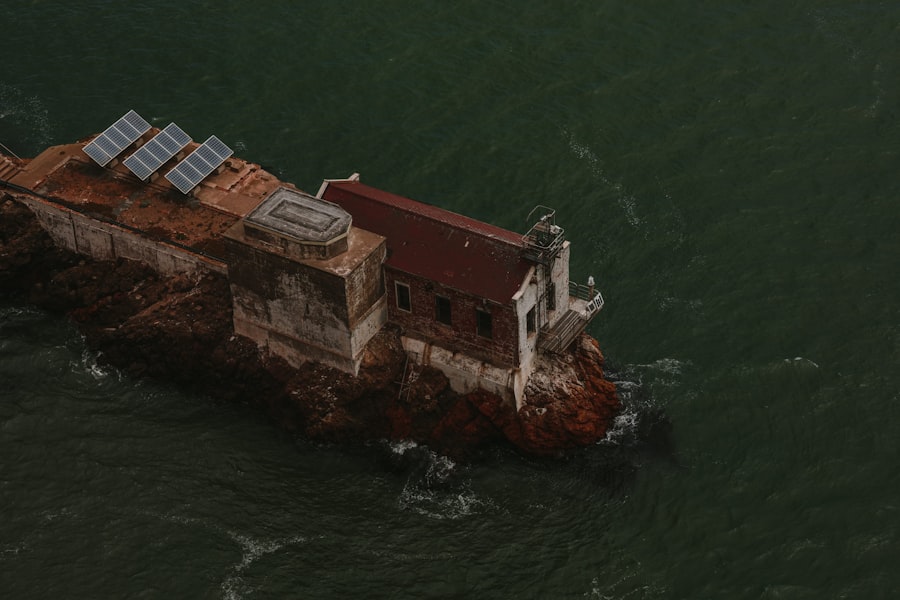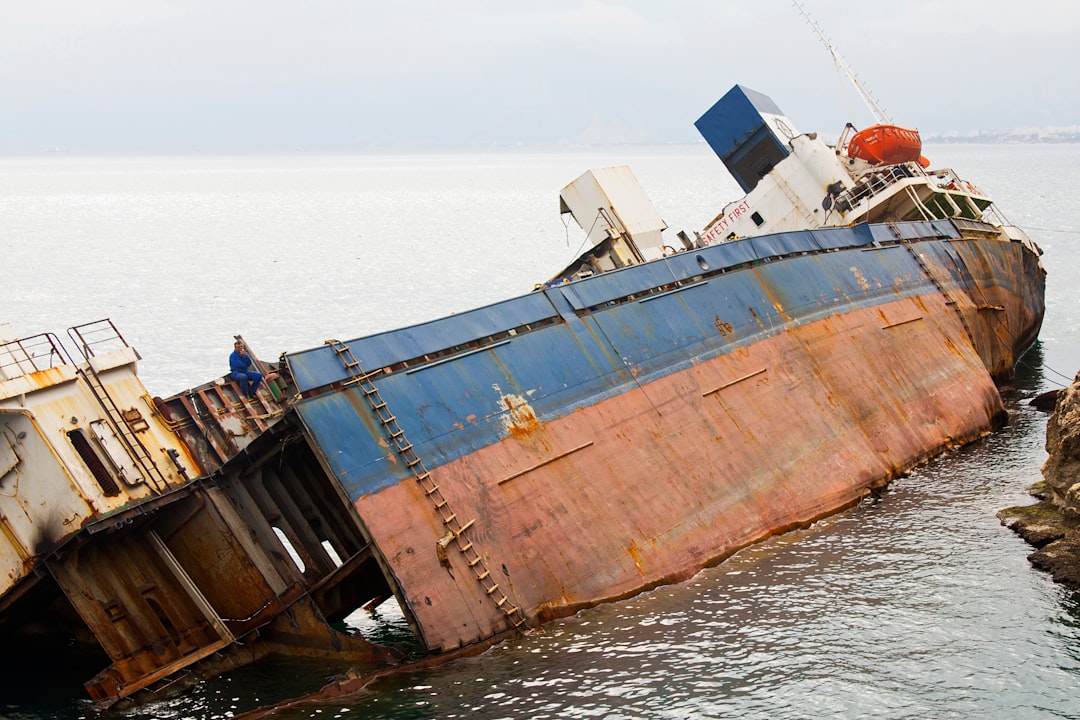The Drake Passage, a body of water renowned for its tumultuous seas and unpredictable weather, has long been a site of maritime tragedy. Among the many vessels that have succumbed to its treacherous conditions, the last shipwreck stands out as a poignant reminder of the dangers that lurk within its depths. This tragic event not only claimed lives but also sparked discussions about maritime safety and environmental concerns in one of the world’s most challenging navigational routes.
The shipwreck serves as a somber chapter in the annals of maritime history, encapsulating the risks faced by seafarers who dare to traverse these perilous waters. As the world reflects on this calamity, it becomes essential to delve into the history of the Drake Passage itself, the events leading up to the shipwreck, and the broader implications of such tragedies. The story of the last shipwreck is not merely one of loss; it is a narrative woven with lessons about human resilience, environmental stewardship, and the relentless power of nature.
Through an exploration of these themes, one can gain a deeper understanding of the Drake Passage and the legacy left behind by those who ventured into its depths.
Key Takeaways
- The Last Drake Passage Shipwreck is a tragic event that occurred in one of the most treacherous maritime routes in the world.
- The history of the Drake Passage is filled with tales of peril and danger, making it a challenging route for sailors and explorers.
- Navigating the Drake Passage is fraught with dangers such as strong winds, high waves, and icebergs, making it a hazardous journey for ships.
- The last voyage of the ship was marked by adverse weather conditions and mechanical failures, leading to its eventual shipwreck.
- The rescue efforts were hampered by the harsh conditions of the Drake Passage, but ultimately led to the successful rescue of the survivors.
The History of the Drake Passage
The Drake Passage has a storied history that dates back centuries, serving as a critical maritime route connecting the Atlantic and Pacific Oceans. Named after Sir Francis Drake, an English explorer who navigated these waters in the late 16th century, the passage has been both a gateway and a barrier for countless sailors. Its strategic importance was recognized early on, as it provided a shortcut for ships traveling between Europe and the Americas.
However, this shortcut came at a steep price, as the passage is notorious for its fierce storms and turbulent seas. Over the years, numerous expeditions have traversed the Drake Passage, each contributing to its rich tapestry of maritime lore. From whalers and explorers to modern-day cruise ships, the passage has witnessed both triumphs and tragedies.
The historical significance of this waterway cannot be overstated; it has played a pivotal role in shaping global trade routes and facilitating exploration. Yet, with its beauty comes danger, as many vessels have met their fate in these unforgiving waters, leaving behind stories of heroism and despair.
The Perils of Navigating the Drake Passage

Navigating the Drake Passage is often likened to dancing with a tempestuous partner; one must be prepared for sudden changes in mood and temperament. The passage is characterized by strong currents, unpredictable weather patterns, and towering waves that can reach heights of over 30 feet. These conditions create a perfect storm for maritime disasters, making it one of the most challenging routes for sailors worldwide.
The combination of cold Antarctic waters meeting warmer currents creates an environment ripe for violent storms that can arise with little warning. The perils of this passage are not merely anecdotal; they are backed by statistics that reveal a troubling history of shipwrecks and maritime accidents. Many vessels have been lost to the depths of the Drake Passage, their stories fading into obscurity as time marches on.
The dangers are compounded by the remoteness of the region, where rescue operations can be hampered by harsh weather and limited resources. For those who choose to navigate these waters, understanding the risks is paramount; preparation and respect for nature’s power are essential for survival.
The Last Voyage of the Ship
| Metrics | Data |
|---|---|
| Ship Name | The Last Voyage |
| Departure Port | New York City |
| Destination Port | London |
| Departure Date | June 15, 2022 |
| Arrival Date | July 1, 2022 |
| Distance Traveled | 3,800 nautical miles |
The last voyage of the ill-fated vessel began with high hopes and aspirations. Crew members and passengers alike were eager to embark on an adventure through one of the world’s most breathtaking landscapes. As they set sail from port, excitement filled the air, with dreams of witnessing stunning vistas and encountering wildlife unique to this region.
As they ventured further into the passage, initial calmness gave way to ominous signs. The weather began to shift dramatically, with dark clouds gathering on the horizon and winds picking up speed.
Despite their best efforts to navigate through these changes, it became increasingly clear that they were entering a storm that would test their mettle. The crew worked tirelessly to secure the ship and ensure passenger safety, but as waves crashed against the hull, it became evident that nature was not on their side.
The Events Leading up to the Shipwreck
In the days leading up to the shipwreck, various factors converged to create a perfect storm of misfortune. Weather forecasts had indicated potential storms in the area, yet some crew members believed they could outrun them or navigate around them. This decision proved to be a grave miscalculation.
As they pressed on into increasingly treacherous waters, communication with other vessels became sporadic, further isolating them from potential assistance. Compounding their challenges was a series of mechanical failures that plagued the ship during its journey. Equipment malfunctions hindered their ability to respond effectively to changing conditions, leaving them vulnerable as they faced mounting waves and fierce winds.
Tensions among crew members escalated as fatigue set in; they were caught in a relentless battle against nature’s fury while grappling with their own limitations. It was a harrowing situation that would ultimately culminate in disaster.
The Rescue Efforts

In the aftermath of the shipwreck, rescue efforts were launched almost immediately as news spread about the tragedy unfolding in the Drake Passage. Nearby vessels were alerted to assist in any way possible, but reaching the site proved challenging due to rough seas and poor visibility. The urgency of the situation was palpable; every moment counted as rescuers raced against time to locate survivors amidst the chaos.
Coast guard teams from various nations mobilized quickly, deploying helicopters and ships equipped for search-and-rescue operations. Despite their best efforts, conditions remained perilous; high waves and strong winds hampered visibility and made navigation treacherous. As hours turned into days, hope began to wane for those awaiting rescue.
Yet amidst despair, stories emerged of bravery and resilience from both rescuers and survivors alike—individuals who risked their lives to save others in an environment where every decision carried weighty consequences.
The Aftermath of the Shipwreck
The aftermath of the shipwreck left an indelible mark on all involved—families mourned lost loved ones while survivors grappled with trauma from their harrowing experience. Investigations were launched to determine what went wrong during that fateful voyage; questions arose about safety protocols, weather forecasting accuracy, and crew training standards.
In addition to human loss, environmental concerns emerged as well. Debris from the wreckage posed potential threats to marine life in an already fragile ecosystem. Efforts were initiated not only to recover bodies but also to assess environmental impacts resulting from fuel spills or other hazardous materials released into surrounding waters.
The shipwreck became emblematic of broader issues facing maritime industries—balancing economic interests with environmental stewardship became an urgent conversation among policymakers and stakeholders alike.
Lessons Learned from the Tragedy
The tragedy of the last shipwreck in the Drake Passage offered invaluable lessons that resonated far beyond its immediate context. One key takeaway was the importance of rigorous safety protocols and adherence to best practices in navigation—especially when traversing notoriously dangerous waters like those found in this region. Training programs for crew members were reevaluated; emphasis was placed on crisis management skills and effective communication during emergencies.
Moreover, advancements in technology played a crucial role in shaping future maritime practices post-incident. Enhanced weather forecasting systems emerged as vital tools for sailors navigating unpredictable environments; real-time data sharing became standard practice among vessels operating within close proximity to one another. Ultimately, this tragedy served as a catalyst for change—prompting industry-wide discussions about improving safety measures while fostering greater awareness around environmental conservation efforts.
The Impact on the Environment
The environmental impact resulting from the last shipwreck reverberated throughout local ecosystems long after rescue efforts concluded. Debris scattered across pristine waters posed immediate threats not only to marine life but also to delicate habitats that had thrived for centuries untouched by human activity. Concerns arose regarding potential fuel leaks or hazardous materials released into surrounding waters—compounding existing challenges faced by wildlife already grappling with climate change effects.
In response to these concerns, environmental organizations mobilized quickly—conducting assessments aimed at understanding long-term implications stemming from this incident. Cleanup efforts were initiated alongside educational campaigns designed to raise awareness about protecting vulnerable ecosystems within maritime regions like those surrounding Antarctica’s coastlines. The shipwreck became emblematic of broader conversations around sustainability—highlighting how human actions can have far-reaching consequences on fragile environments.
The Legacy of the Last Drake Passage Shipwreck
The legacy left behind by this tragic event extends beyond mere statistics or headlines; it serves as a poignant reminder of both human vulnerability and resilience in confronting nature’s mightiest forces. Memorials were erected honoring those who lost their lives—a testament not only to their bravery but also an acknowledgment that every voyage carries inherent risks deserving respect. Furthermore, discussions surrounding maritime safety gained renewed urgency following this incident—prompting regulatory bodies worldwide to reevaluate existing protocols while advocating for improved training standards among seafarers navigating perilous routes like those found within Drake Passage’s confines.
As time passes since this tragedy unfolded, its lessons continue shaping policies aimed at safeguarding future generations venturing into these treacherous waters.
Conclusion and Reflections on the Tragic Event
In conclusion, reflecting upon the last shipwreck in the Drake Passage reveals profound insights into humanity’s relationship with nature—a complex interplay marked by both awe-inspiring beauty and formidable challenges. While this tragedy resulted in immeasurable loss, it also sparked critical conversations about safety practices within maritime industries while emphasizing environmental stewardship’s importance amidst ongoing climate change concerns. As society moves forward from this event—honoring those who perished while learning from past mistakes—it becomes imperative that future generations approach exploration with humility and respect for nature’s power.
The legacy left behind serves not only as a cautionary tale but also as an enduring call-to-action—urging individuals everywhere to prioritize safety while fostering greater awareness around protecting our planet’s fragile ecosystems for years yet to come.
The Drake Passage, known for its treacherous waters, has been the site of numerous maritime incidents over the years. The last ship to sink in this notorious stretch was the MV Explorer, which met its fate in 2007 after striking submerged ice. For more detailed information on the history and challenges of navigating the Drake Passage, you can explore a related article on MyGeoQuest. This resource provides insights into the geographical and environmental factors that contribute to the perilous conditions faced by vessels in this region.
WATCH NOW! Drake Passage: Earth’s Deadliest Waters Revealed
FAQs
What is the Drake Passage?
The Drake Passage is the body of water between the southern tip of South America and the South Shetland Islands of Antarctica. It is known for its rough seas and challenging sailing conditions.
When was the last ship to sink in the Drake Passage?
The last known ship to sink in the Drake Passage was the MV Explorer, which sank on November 23, 2007 after hitting an iceberg. All passengers and crew were safely evacuated.
What caused the sinking of the MV Explorer?
The sinking of the MV Explorer was caused by the ship hitting an iceberg. The impact caused a breach in the hull, leading to the ship taking on water and eventually sinking.
Are there any specific dangers associated with sailing in the Drake Passage?
Sailing in the Drake Passage can be dangerous due to its rough seas, strong winds, and potential for icebergs. These conditions can pose challenges for ships navigating through the area.
What safety measures are in place for ships traveling through the Drake Passage?
Ships traveling through the Drake Passage are required to adhere to strict safety regulations, including having experienced crew members, carrying appropriate safety equipment, and receiving regular weather updates to navigate the challenging conditions.
